






Managing Editor Consultant Editors
Sarath
Naomi
Editorial Enquiry: admin@cxoomagazine.com
Art & Design
Charlie Jameson
Free Subscription www.cxomagazine.com
International Partnerships admin@cxoomagazine.com Americas Europe Middle
Branding & Marketing Partnership
Jennifer Anderson
Monica
Rachel
Sales Enquiry: admin@cxoomagazine.com
Follow Us On www.linkedin.com/company/cxomagazinepage www.facebook.com/CXOMagazinePage

CXO

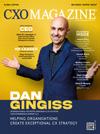


It’s like the time you walk into a room, and everyone’s busy nodding along, but you can tell no one’s really paying attention. Ever experienced that? Maybe at a team meeting or a business conference where every speaker sounds like they’re reading from the same corporate playbook? That’s what leadership used to be—predictable, rehearsed, and all about maintaining control.
But today, the game has changed. The leaders who stand out now are the ones who don’t shy away from being human. They’re comfortable showing up as themselves— flaws and all—because they know that real influence comes not from authority, but from authenticity. They listen more than they talk, make decisions based on values, and don’t just build businesses—they build trust. Think about it: how often do you remember a leader who impressed you with their strategy, compared to one who moved you with their story?
In this issue of CXO Magazine, we’re highlighting leaders who are rewriting the rulebook. These are the change-makers who see challenges as opportunities, who put purpose before profit, and who lead with empathy in a world that could use a little more of it. They remind us that leadership isn’t about fitting into a mold—it’s about breaking it.
Take Dan Gingiss, for example. He’s not just an expert in customer experience; he’s someone who genuinely believes that creating memorable experiences is a competitive advantage. With leadership roles at McDonald’s, Discover, and Humana under his belt, and as an author and podcaster, Dan has built a career around making people feel heard and valued.
So, as you dive into this edition, think about what makes you stand out as a leader. Is it your ability to inspire? To connect? To create spaces where people feel they belong? Because the true power of leadership lies not in your position, but in the impact you make on others.
Enjoy Reading.

Sarath Shyam



24
Mark W Lamplugh Jr, CEO of South Jersey Treatment Management Company
Expanding Access to High-Quality Addiction and Mental Health Care Through Innovative Solutions

54
Kipp Sorensen, Chief People Officer of JourneyTEAM
Driving a Culture Where People and Technology Thrive Together

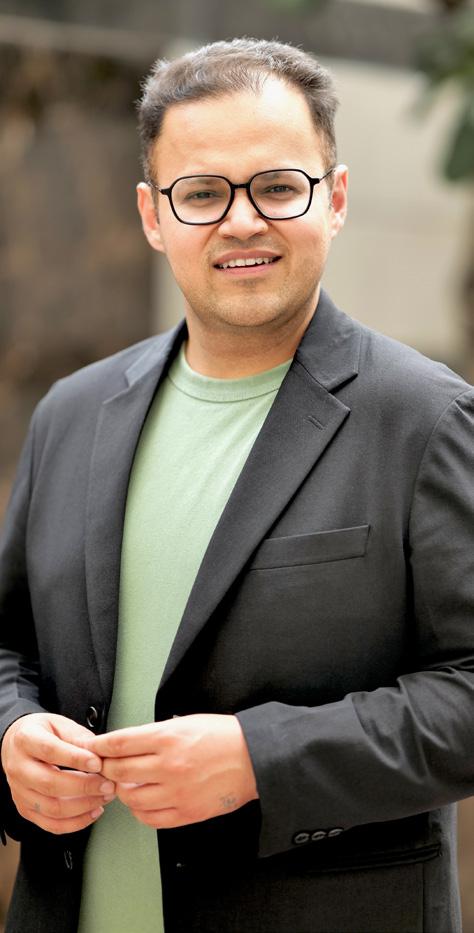

18
Jeanne Bliss, Founder and CEO, Customer Bliss, & Co-Founder, Customer Experience Professionals Association
Empowering Organisations to Become the Best Version of Themselves

38
Melissa Ciciola, Director Management Consulting & Service Excellence, Prométhée
Creating a More Courageous and Innovative World
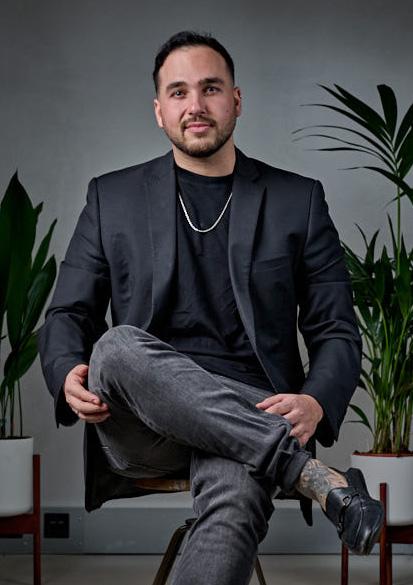
70
Joseph Black, Co-Founder, UniTaskr
Preparing for the Future: How Education and Technology are Shaping Tomorrow’s Workforce
INTERNATIONAL KEYNOTE SPEAKER & 2 X AUTHOR, THE EXPERIENCE MAKER LLC
Dan Gingiss is an international keynote speaker and customer experience expert who believes that a remarkable experience is your best competitive advantage. His 20-year professional career included leadership positions at McDonald’s, Discover and Humana. Dan is the author of two books, The Experience Maker and Winning at Social Customer Care, and he co-hosted the award-winning Experience This! podcast. He earned a B.A. in psychology and communications from the University of Pennsylvania and an M.B.A. in marketing from the Kellogg School of Management at Northwestern University. Dan is also a licensed bartender and a pinball wizard.
Recently, in an exclusive interview with CXO Magazine, Dan shared his professional trajectory, insights on the impact of AI on CX, the major takeaways from his best-selling books, future plans, words of wisdom, and much more. The following excerpts are taken from the interview.




Hi Dan. Can you tell us the “backstory” about what brought you to this career path in customer experience?
I actually spent most of my career in marketing. I managed almost every marketing channel from direct mail through SEO and social media. When I worked at Discover Card, the chief digital officer recruited me to a new role called Head of Digital Customer Experience. I asked
him why he recruited me, since I had never done that kind of work before, and he told me it was because he had watched me in meetings and that I was always the person with the “Customer” hat on. I was always trying to solve business problems through the lens of the customer. I didn't even realize that about myself, but he was right! During that role, I fell in love with the power of customer experience, and I have never looked back.
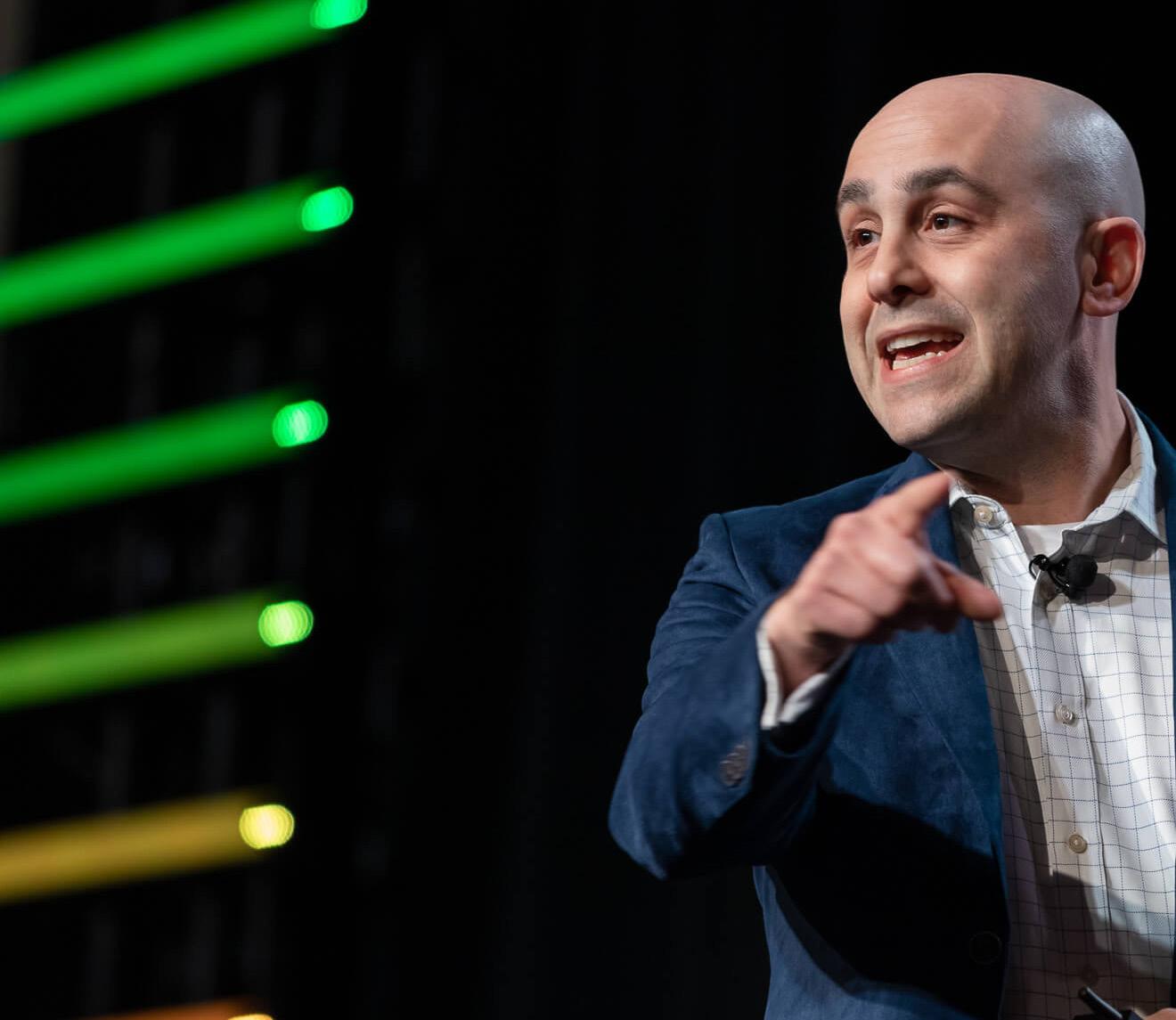
In today’s fast-paced and constantly evolving landscape, what strategies should leaders employ to maintain a strong connection with their customers and anticipate their changing needs?
A very underrated tactic is to just talk to more of them! I'm always surprised at how companies spend so little time with their customers, the people who are literally paying the bills and

keeping the lights on. When we ask customers for feedback, they are more than happy to give it to us. And if we are willing to listen, they will tell us what to start, stop, and continue doing to meet and exceed their expectations.
Have you seen, firsthand, any AI impacts on the practice of CX? What impacts are you expecting in the next few years?
YES! In fact, I am just about to announce a brand-new keynote on this topic, called AI Meets Customer Experience: Expect The Unexpected. It will highlight four key components of how
I'm always surprised at how companies spend so little time with their customers, the people who are literally paying the bills and keeping the lights on
AI is impacting CX: hyper-personalization, predictive analytics, virtual reality, and customer service. I've really been diving deep into both the technology and case studies, and it is truly incredible. One impressive example is Starbucks. Starbucks collects over 100 million transactions a week across its 30,000
stores worldwide. This massive amount of data is then fed into an AI engine which helps with everything from demand forecasting to staffing levels to loyalty program offers. It’s a great example of how we don’t need more data; we just need to know how to use the data we already have.
The Experience Maker is really the culmination of all of my research and storytelling around customer experience
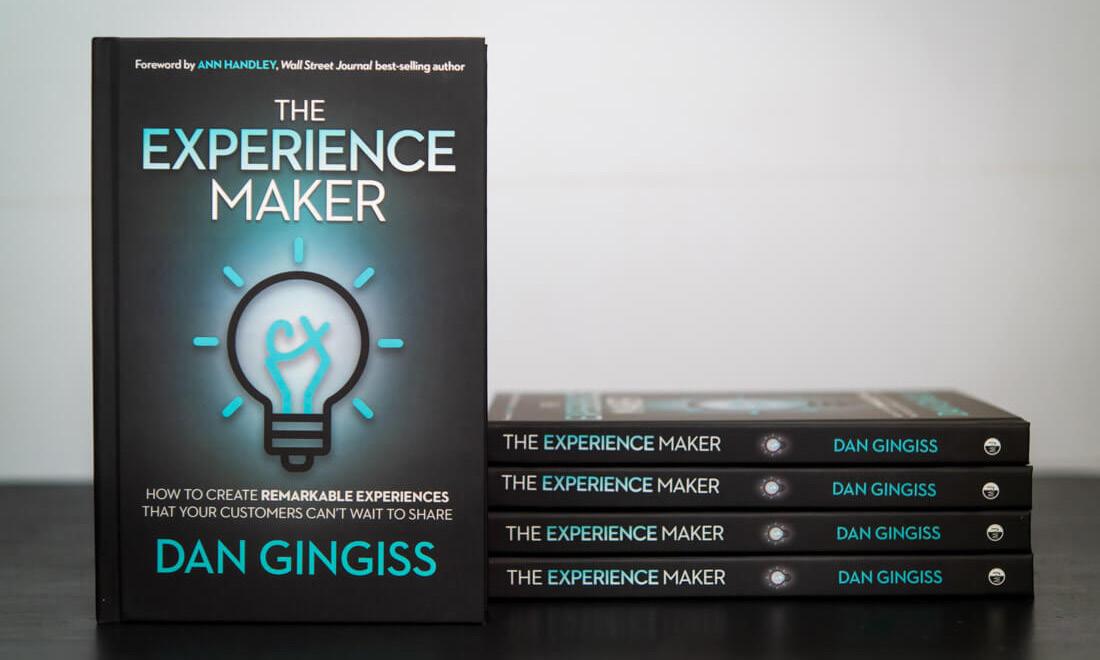

Can you please share the major takeaways from your books, The Experience Maker: How To Create Remarkable Experiences That Your Customers Can’t Wait To Share and Winning at Social Customer Care: How Top Brands Create Engaging Experiences on Social Media. The Experience Maker is really the culmination of all of my research and storytelling around customer experience. It makes the case that customer experience is the ultimate competitive differentiator, and actually the most important form of sales and marketing. It also introduces
my WISER methodology which stands for Witty, Immersive, Shareable, Extraordinary, and Responsive. Together, these five steps help companies consistently create remarkable experiences for their customers, who in turn can't wait to tell others about them. It finishes with some tangible steps for implementing customer experience initiatives in any company in a simple, practical, and inexpensive way. Winning at Social Customer Care was one of the first books on the market about using social media for customer service rather than just for marketing. I still believe today that social media is all about engagement, not marketing. The
book walks through how to develop a social customer care philosophy, how to find the right technology provider, how to recruit and train social customer service agents, and how to integrate social customer care with the rest of your business.
You have been a recipient of several awards and accolades over the years including World’s Top 30 Customer Experience Professionals and Top Keynote Speakers. Our readers would love to know the secret sauce behind your success.
Honestly, it's that I am fortunate to be able to do what I love. I am so passionate about customer
experience, and I love inspiring others to be the same. I think people connect with me because they find that to be genuine and authentic. Additionally, because I spent 20 plus years in corporate America, I've been in the trenches doing the work. so I'm not just a career speaker or consultant, I actually know how to get things done in a corporate environment.
How would you describe your leadership style?
I like to lead by example, and I pride myself in being a strong people leader. I think we need more people leaders in business, managers who help build up their teams and understand that success can and should be shared. I was always so

proud when someone I managed got promoted, even if it meant they moved to another team. And I really tried to get to know each person individually so that I could customize a plan for their success.
What are you doing to ensure you continue to grow and develop as a CX leader?
I am just one of many public voices talking about customer experience. I love to read and watch what others are saying as well, both influencers and practitioners. The space continues to develop as customer expectations continue to rise, and artificial intelligence is simply speeding up that process. It's an exciting time to both follow and
participate in new and innovative experience development opportunities.
What do you believe are the characteristics and actions that you used to get to where you are today?
I think I've always been a pretty good influencer, and I don't mean that in a social media sense. I was known in Corporate America as an idea guy, someone who is always looking for creative solutions to problems. That's what I love about customer experience; while many initiatives are based on hard data and analytics, the best ones also leverage a healthy dose of creativity. That's how the most memorable and remarkable experiences are developed. But
The customer journey has so many interactions, and it's often the little things that stand out the most
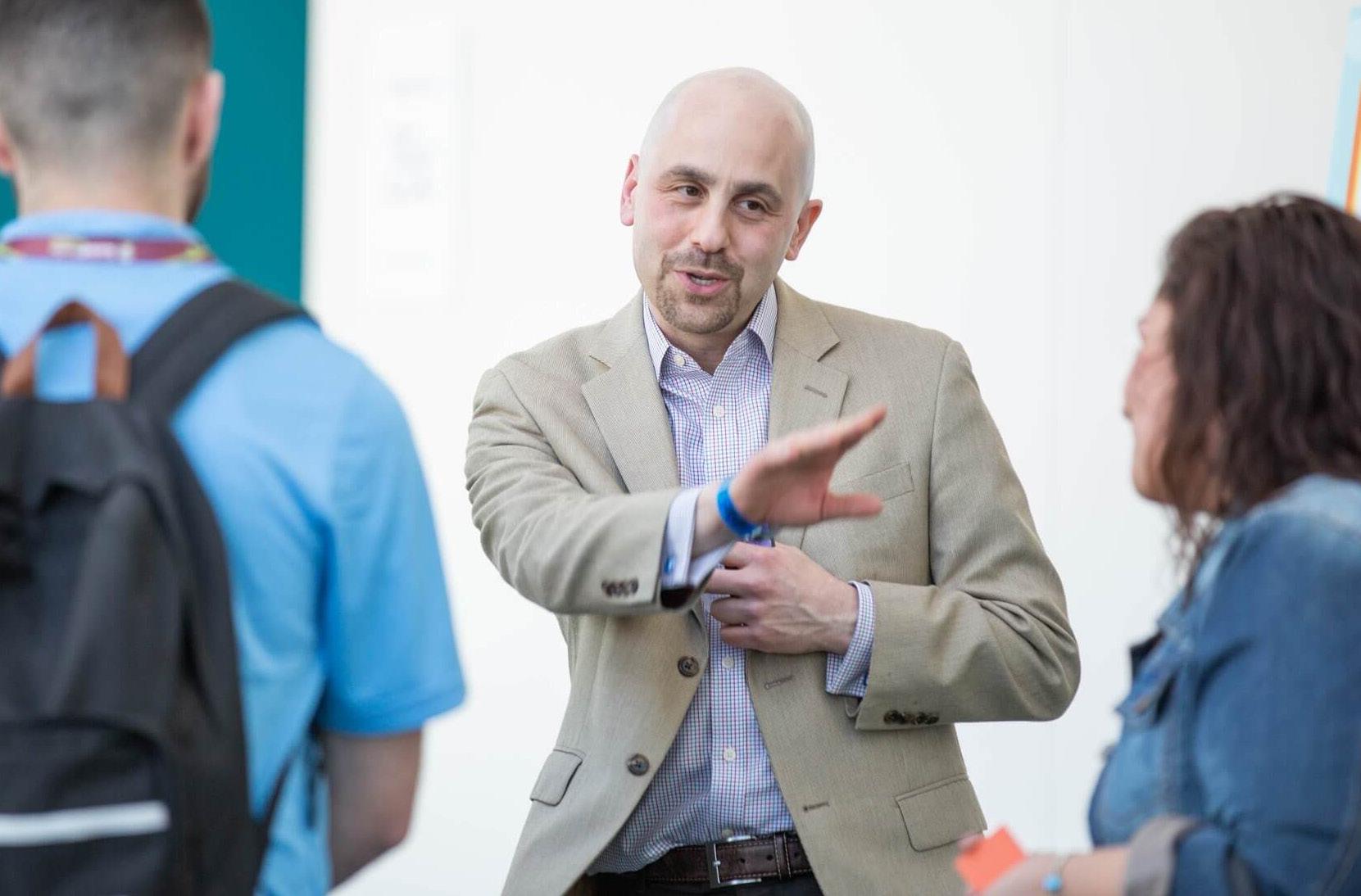
being an idea guy isn't enough if you can't help to influence others to help achieve the vision. I accomplished that by developing strong teams who worked together, played together, and celebrated successes together.
Where do you see yourself in the next 5 years?
I really found my passion with keynote speaking, especially in the customer experience arena. I definitely hope to continue that and be speaking in front of even more people in the next 5 years. I do believe that my message is important for all companies to hear, and I'm honored to be a promoter of this growing, critical area of the business. I think you'll definitely see at least one more book from me and several new speeches to keep things current.
If you could give any advice to someone striving to be a CX Leader, what would it be?
Pay attention to the little things. The customer journey has so many interactions, and it's often the little things that stand out the most. this is true whether they are little positive things or little negative things. Too often, companies get stuck with this concept that customer experience needs to be a multi-year, multi-million-dollar transformational project. Unfortunately, that often means it never gets done at all. But when we look at customer experience as a series of little things, it becomes so much more approachable. Keep in mind, though, it's an endless series of little things. So, we have to enjoy the journey, because as of yet there is no destination!

Jeanne Bliss has dedicated her entire 35-year career to improving lives. That’s why now, her purpose is guiding leaders around the world – so they can bravely guide their organizations to become the best versions of themselves. She is known globally for transforming business to earn customer-driven growth. A 5-time Chief Customer Officer and coach to over 20,000 leaders, her practices are field-tested and proven. Bliss' 5-Competencies for customer-driven growth have been adopted around the world, and her 4 best-selling books on customer experience and leadership are the guidebooks of the CX Profession. She has delivered over 1,500 transformative keynotes globally, has coached over 20,000 leaders on leading to elevate their company in the marketplace, with sustainable growth. She is the cofounder of the customer experience professional’s association and is fondly known as the “godmother” of customer experience.
Recently, in an exclusive interview with CXO Magazine, Jeanne shared her professional trajectory, insights on how she helps companies to become the best version of themselves, her secret to striking a work-life balance, future plans, words of wisdom, and much more. The following excerpts are taken from the interview.

Jeanne Bliss Founder and CEO, Customer Bliss, & Co-Founder, Customer Experience Professionals Association

Hi Jeanne. Tell us the story of how you got involved in customer experience. How did your career lead you here?
I began my career in Retailing, working for Hart Marx. I ended up at Lands’ End, which was essentially the Zappos’ of our day. I was
training the 2400 phone operators so was very close to the operation. As a result, I began peppering the CEO with questions about things that needed to be done. He took me off the phones to report to the entire executive committee as the “conscience” of the company
as we were growing 80 percent a. year. That is how I got my start and began to understand the important of a united leadership team and knitting the silos together to deliver a deliberate and wonderful experience.
Why do so many companies struggle with making CX a priority? What are some common mistakes companies make?
Most companies are made up of well-intended “parts’ or silos. Each of the operating areas have their own key performance indicators and goals and often different things that they are paid on. Even if there is a high-level score like NPS, often the silos don’t have the practice to come
togheter in a united way to effect real change that the customer cares about. They impart their own personal score by area….and the beat goes on.
As a seasoned CX leader, how do you help companies become the best version of themselves?
We start with how they want to be remembered. What are the behaviors, personality traits, and ways they want to be known for treating people. We ask the hard questions, like if we value “x” how does that impact how we do returns, or train our people, or hire people. These are explicit and hard decisions that many companies don’t piece together proactively as the business is being build.
Our goal is to let people know that there is a place for their unique skill set, that they have found a home, and that we are their “people” and peers.”

You are the Co-Founder at Customer Experience Professionals Association. Can you please tell us about this organization, its mission, and vision? We wanted to give the people who do this work a home, a community, a roadmap and a career. Often these folks know what they are good at (right brain / left brain work and uniting people) but there is no career track for that in most companies. We want to make sure that these roles are not limited to being just someone that runs the survey, but rather, a leader who can unite the C-Suite and help the organization grow in an admirable and repeatable way. Our goal is to let people know that there is a place for their unique skill set, that they have found a home, and that we are their “people” and peers.”
Have you seen, firsthand, any AI impacts on the practice of CX? What impacts are you expecting in the next few years?
AI can have a very powerful role in providing a dimensional response to a customer need, and to experiences. Right now, it is often a “plug and play” tactic that gets put into campaigns in – but I think given time it will be integrated and become quite powerful in show true humanness in responses and even in proactive outreach.
How would you describe your leadership style?
I am an out-there, but collaborative leader. Because I’ve been around doing this work so long, I initially was stating the path. But now I have much more fun guiding people to the hints and tools and nuggets that form their path= so that it is THEIR path.
I am evolving my communicating style and messages to start to move out of what we think of as traditional cx to the attitudes and intentions that form a company and make them and the people in them beloved.
Stay tuned!
What are you doing to ensure you continue to grow and develop as a CX leader?
I am evolving my communicating style and messages to start to move out of what we think of as traditional cx to the attitudes and intentions that form a company and make them and the people in them beloved. Stay tuned!
What do you believe are the characteristics and actions that you used to get to where you are today?
Tenacity, being a little too young to not realize what an undertaking I was trying to do, the ability to unite people, being organized and never giving up. And learning how to unite with the people who want to champion this work.
What is your secret to striking a worklife balance?
Learning to say no. Knowing when I need to pull back and put family first.
Where do you see yourself in the next 5 years?
Continuing to do more content when I’ve got something to say, traveling and loving my husband and my life.
If you could give any advice to someone striving to be a CX Leader, what would it be?
Do this to be a part of making an operational great and human. Don’t do it to get great scores or get in with execs. Don’t take a “CX” job that will box you in. See where something can be improved and contribute. Then, you’re on your way.
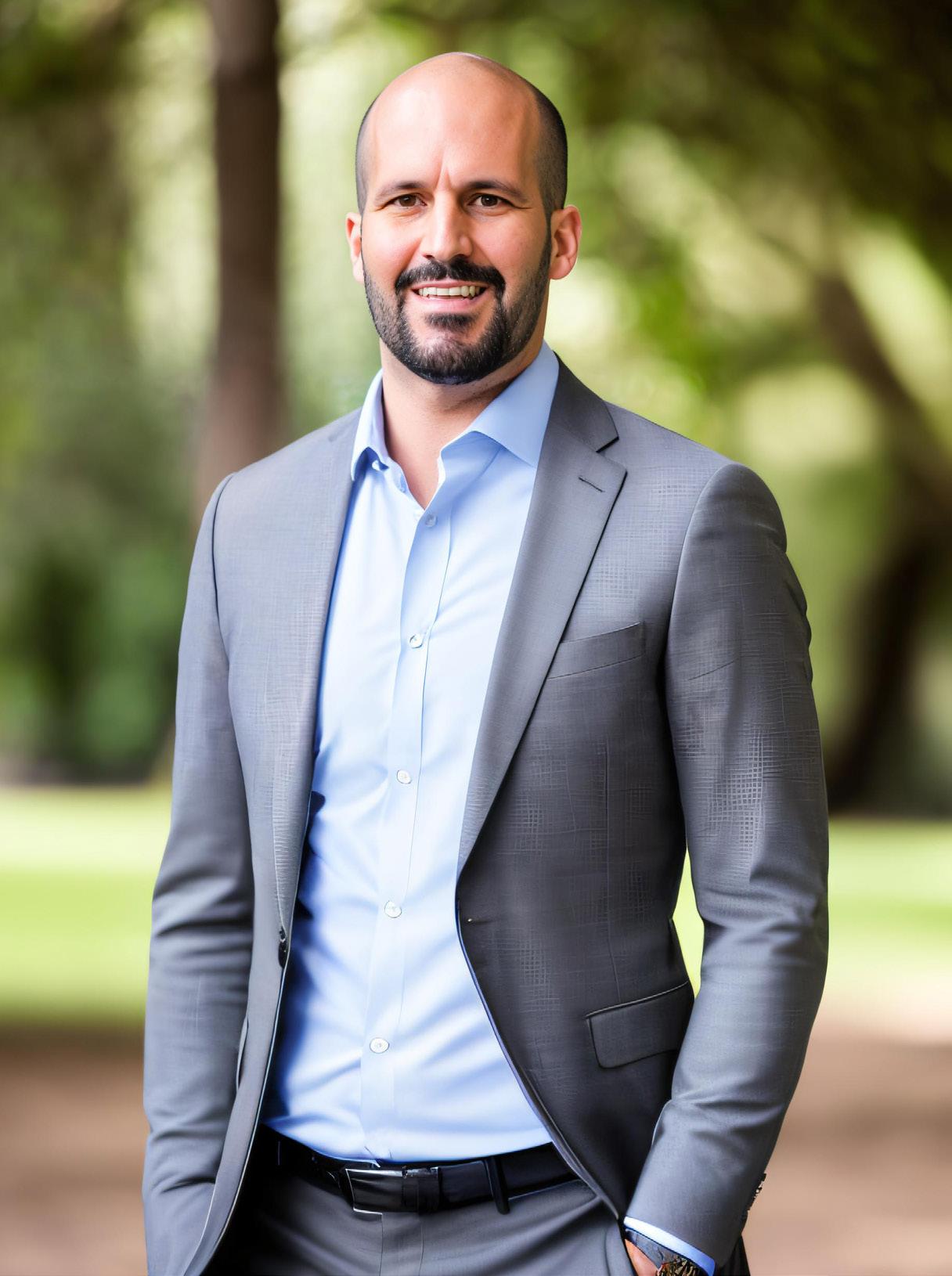
Mark W Lamplugh Jr CEO of South Jersey Treatment Management Company
Mark W. Lamplugh Jr.’s journey from firefighter to CEO of South Jersey Treatment Management Company is a story of dedication and transformation. His career began with a deep commitment to serving his community, responding to crises, and helping others in their most vulnerable moments. But over time, Mark noticed something troubling—his fellow first responders were struggling with unique mental health challenges that weren’t being addressed. This realization sparked a shift in his career. "I saw the need for more specialized support for first responders," Mark recalls. He began developing programs specifically designed to
address the mental health and well-being of firefighters and other emergency personnel. These programs didn’t just help—they resonated deeply with those who needed them most.
As these initiatives gained traction, Mark’s role naturally expanded. He moved into healthcare marketing, working to ensure that these vital programs reached a broader audience. His success in this area eventually led him to his current role as CEO.
Now at the helm of South Jersey Treatment Management Company, Mark is committed to creating and promoting effective treatment options for a wider audience, all while staying true to his original mission. His journey through
the non-profit, behavioral, mental health, and oncology sectors has profoundly influenced his leadership style. "Empathy, collaboration, and adaptability are at the core of how I lead," Mark says, reflecting on the lessons he’s learned along the way.
In the non-profit world, he learned the power of community engagement and collective effort. His time in behavioral and mental health taught him the importance of compassion and individualized care, shaping his approach to creating a supportive work environment. And in oncology, he discovered the critical importance of resilience and staying current with innovations, a lesson that fuels his relentless drive for improvement and innovation today.
Mark’s leadership is now a blend of all these experiences. He strives to foster a culture of teamwork and empowerment, where every team member knows their work makes a meaningful difference. "I believe in a relentless commitment to improvement and innovation," he emphasizes, "because that’s what it takes to truly make an impact in the lives of those we serve."
At the heart of South Jersey Treatment Management Company is a clear and unwavering mission: to provide the highest quality addiction and mental health treatment options in New Jersey. Through their flagship programs, Renewed Light and Lifetime Recovery Center, the company is dedicated to delivering comprehensive care tailored to meet the unique needs of each individual.
Mark is the driving force behind this mission. His leadership is focused on keeping the company at the forefront of innovative treatment methodologies while maintaining a patient-centered approach in every service offered. “Building a strong, expert team is crucial,” Mark emphasizes, “because their skills and dedication are what make exceptional care possible.”
Now at the helm of South Jersey Treatment Management Company, Mark is committed to creating and promoting effective treatment options for a wider audience, all while staying true to his original mission
Collaboration and continuous improvement are cornerstones of the culture Mark has cultivated within the company. By fostering an environment where team members work together and constantly seek better solutions, they are able to effectively tackle the complex challenges associated with addiction and mental health.
Mark’s background in marketing and strategic planning plays a pivotal role in promoting the company’s programs and ensuring that those in need are aware of the resources available to them. One of the key innovations under his
leadership is the implementation of advanced technologies, such as the AI patient chat tool Wendi. This tool has significantly improved the company’s ability to engage with and support patients from their very first inquiry.
Ultimately, Mark’s goal is clear: to lead South Jersey Treatment Management Company in a way that upholds its mission of providing top-tier treatment options. He is committed to ensuring that every patient receives the best possible care and support on their journey to recovery.

For Mark, ensuring the delivery of compassionate, high-quality care across South Jersey Treatment Management Company’s facilities is more than just a priority—it’s a mission. To achieve this, Mark focuses on building and nurturing a team of highly qualified and dedicated professionals. “Each team member brings a wealth of knowledge, experience, and passion for helping others,” he says, emphasizing that this collective expertise is essential in providing the best possible care to patients.
Staying at the forefront of therapeutic delivery is another key aspect of Mark’s leadership. The company continually integrates advanced therapies, such as biofeedback and Transcranial Magnetic Stimulation (TMS) Therapy, into their programs. These cutting-edge treatments offer patients innovative options for managing and overcoming their conditions, reinforcing the company’s commitment to providing effective and modern care.
The programs at Renewed Light and Lifetime Recovery Center are designed to be comprehensive and patient-centered. By continually updating treatment methodologies and investing in the latest therapeutic technologies, Mark ensures that the diverse needs of patients are met effectively. But beyond technology, there’s an equally strong emphasis on empathy and individualized care. The team is trained to approach each patient with understanding and compassion, creating a supportive environment where patients feel safe and valued. “Our commitment to quality and compassion is what drives our success,” he notes.
Under the leadership of Mark, South Jersey Treatment Management Company has embraced

At the heart of South Jersey Treatment Management Company is a clear and unwavering mission: to provide the highest quality addiction and mental health treatment options in New Jersey
a series of innovative strategies to advance addiction and mental health care. One of the key focuses has been integrating the latest therapeutic delivery methods to ensure the highest quality care for patients.
Recently, the company introduced cuttingedge therapies such as biofeedback and Transcranial Magnetic Stimulation (TMS) Therapy into the treatment programs at Renewed Light and Lifetime Recovery Center. These advanced therapies offer patients new

and effective ways to manage and overcome their conditions, significantly enhancing their overall treatment experience and outcomes.
Mark recognizes that the strength of their programs also lies in the people behind them. “Our success starts with a highly qualified and dedicated team,” he says, highlighting the importance of having professionals who bring not only expertise but also a genuine passion for helping others. This strong foundation is crucial in delivering compassionate, individualized care to each patient.
Continuous improvement is another pillar of Mark’s approach. By constantly evaluating and updating treatment methodologies, the company ensures that patients receive the most effective and innovative care available. “Staying at the forefront of industry advancements is essential to what we do,” Mark emphasizes.
For Mark, leading South Jersey Treatment Management Company comes with its share
of unexpected challenges. From operational hurdles to sudden changes in patient needs or industry regulations, no two days are ever the same. Yet, Mark’s experience as a firefighter has uniquely equipped him to handle these situations. “The ability to remain calm under pressure and make quick, informed decisions is something I bring to my leadership role every day,” he explains.
In firefighting, staying composed and focused is critical to navigating emergencies successfully. Mark applies this same mindset to his leadership, particularly when faced with unforeseen challenges. His approach is simple yet effective: remain calm, evaluate the situation from multiple angles, and make rational decisions that benefit both patients and the team.
But Mark doesn’t do it alone. He relies heavily on the expertise of his team, trusting them to provide valuable insights and support when tackling complex issues. “Their specialized knowledge and skills are essential in addressing issues effectively and efficiently,” Mark notes. By fostering a culture of open communication and collaboration, the team is able to confront problems head-on and find solutions that uphold the company’s high standards of care.
Throughout his career, Mark has learned several key lessons that he consistently applies to his role as CEO of South Jersey Treatment Management Company. At the heart of his leadership approach is the importance of empathy and understanding. “Whether working with first responders, behavioral health professionals, or patients, recognizing and addressing individual needs has always been paramount,” Mark shares.
Another critical lesson for Mark has been the value of resilience and adaptability. His experiences navigating the complexities of the non-profit sector, behavioral and mental health fields, and oncology have taught him to remain flexible and open to change. This adaptability is crucial in leading an organization through evolving challenges and opportunities, ensuring that the company stays on course even in uncertain times.
Effective communication and collaboration also play a significant role in Mark’s leadership philosophy. Building strong teams and fostering a culture of open dialogue are essential for aligning everyone with the organization’s mission and goals. “It’s about creating an environment where every team member feels valued and empowered to contribute their best,” he emphasizes.
Lastly, Mark’s commitment to continuous improvement and innovation has been a driving force behind his success. Staying current with industry advancements and being willing to implement new strategies and technologies have allowed him to consistently drive growth and improve outcomes for the organization.
Incorporating his marketing expertise into his leadership role at South Jersey Treatment Management Company, Mark emphasizes a collaborative approach that leverages the skills and knowledge of his expert team. With a background as a marketing executive and author, Mark understands the importance of strategic communication and outreach. Yet, he is quick to highlight that the success of their programs relies heavily on the collective efforts of a dedicated and skilled team.
By continually updating treatment methodologies and investing in the latest therapeutic technologies, Mark ensures that the diverse needs of patients are met effectively
Mark places a great deal of trust in his team's extensive experience in treating patients to guide his decisions. “Trusting their insights and expertise ensures that our marketing strategies align closely with the actual needs and preferences of our patients,” he explains. By working hand-in-hand with clinical professionals, the team creates and promotes programs that are not only effective but also compassionate.
Mark’s role is to provide the vision and direction for the company’s marketing initiatives while fostering an environment where his
team feels empowered to share their insights and contribute to the organization’s success. This collaborative approach allows South Jersey Treatment Management Company to continuously refine its strategies and deliver the highest quality care to those they serve.
With his extensive background in marketing and business, Mark approaches customer engagement and CRM at South Jersey Treatment Management Company with a multi-faceted and innovative strategy. One key element they've implemented is the AI chat tool, Wendi, on their websites. This tool offers immediate assistance

to potential patients, guiding them through the services offered and facilitating the intake process. By providing instant responses, Wendi ensures visitors receive the information and support they need without delay.
In addition to Wendi, the company has established a robust outbound calling system. The team proactively reaches out to potential patients and referral sources, offering personalized support and detailed information about the programs. This direct engagement helps build strong relationships and trust with their audience.
Email campaigns also play a crucial role in their strategy. Through targeted email marketing, the company keeps its community informed about services, upcoming events, and success stories. This consistent communication maintains a connection with the audience, encouraging them to reach out when they need assistance.
Alumni outreach is another vital component of their approach. By maintaining connections with former patients, the company fosters a supportive network that promotes long-term recovery and encourages word-of-mouth referrals. Alumni who have had positive experiences often become advocates, helping the company reach more people in need.
Finally, Mark is committed to ensuring that intakes are completed within 24 hours or less. This quick turnaround time demonstrates the company’s dedication to providing timely and compassionate care, significantly reducing the waiting period for those seeking help.
A notable example of Mark’s strategic foresight and business acumen is the successful implementation of the AI patient chat tool, Wendi,
Incorporating his marketing expertise into his leadership role at South Jersey Treatment Management Company, Mark emphasizes a collaborative approach that leverages the skills and knowledge of his expert team
across South Jersey Treatment Management Company’s websites. Recognizing the growing importance of digital engagement and the need for immediate patient support, Mark led the initiative to integrate this AI-driven feature into the company’s online platforms.
Wendi was specifically designed to provide instant responses to patient inquiries, guide them through the services offered, and streamline the intake process. By anticipating the increasing demand for accessible and immediate assistance, Mark ensured that the company was well-positioned to meet the needs of its patients efficiently.
Since Wendi’s implementation, the company has experienced a substantial increase in patient intakes. The AI chat tool has not only enhanced the speed and quality of responses to potential patients but has also ensured that they receive the necessary information and support without delay. “This strategic move has led to higher patient satisfaction and a notable boost in our intake numbers,” Mark notes, highlighting the effectiveness of leveraging advanced technology to meet patient needs.
The success of Wendi illustrates how innovative thinking and a proactive approach can significantly impact patient engagement and overall service delivery. By staying ahead of technological trends, Mark has positioned South Jersey Treatment Management Company as a leader in providing timely, compassionate care, further solidifying the company’s commitment to its mission of helping those in need.
Business forecasting has become a cornerstone of strategic planning at South Jersey Treatment Management Company, allowing the organization to anticipate trends, allocate resources efficiently, and make informed decisions that drive both
growth and success. Under the leadership of Mark, forecasting is not just about numbers; it’s about creating a roadmap that aligns with the company’s mission of providing high-quality care.
A prime example of effective forecasting involved predicting patient admissions based on Google PPC (Pay-Per-Click) ad spend. By meticulously analyzing the performance of PPC campaigns, Mark identified clear patterns and correlations between ad investments and the subsequent inquiries and admissions. This deep dive into data allowed him to project future admissions with remarkable accuracy.
Mark’s proactive approach included increasing PPC ad spend during peak seasons, which enabled the company to anticipate
and accommodate a higher volume of patient intakes. This foresight ensured that the necessary staff and resources were in place to provide timely and effective care, directly impacting patient satisfaction. By reducing wait times and enhancing the overall intake experience, the organization was able to improve operational efficiency and better serve its patients.
“Business forecasting is an essential component of our strategic planning,” Mark emphasizes. “It helps us stay ahead of industry trends and ensures that we’re making informed, data-driven decisions.” This commitment to forecasting has positioned South Jersey Treatment Management Company as a forwardthinking leader in the behavioral health industry,
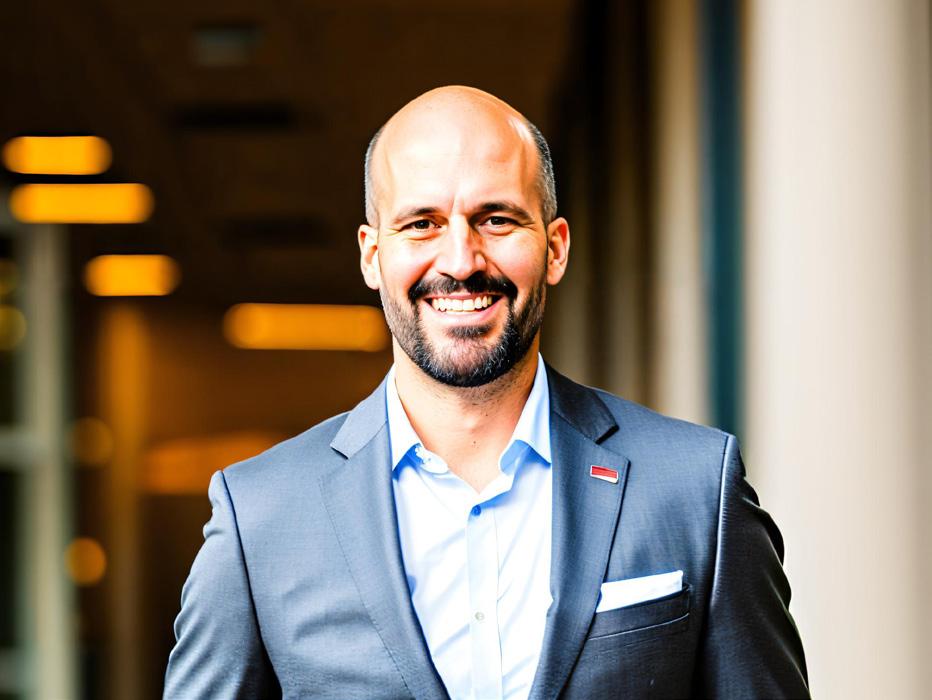
where strategic planning translates into tangible benefits for both the organization and its patients.
Balancing the business demands of running a healthcare company with the need for compassionate patient care is a crucial aspect of Mark W. Lamplugh Jr.'s role at South Jersey Treatment Management Company. The organization’s mission extends beyond providing treatment—it’s about ensuring that every individual who reaches out gets the support they need, regardless of their ability to enter the program or their financial situation.
“At South Jersey Treatment Management Company, our primary goal is to make sure
that every caller receives help and resources,” Mark explains. “Even if someone can’t join our programs, we’re committed to referring them to appropriate resources.” This dedication to offering assistance, regardless of a person’s situation, underscores the company’s core value of compassion.
Understanding that financial barriers can prevent access to essential care, the company works closely with clients to address deductibles and financial plans. “We collaborate with clients to find solutions that enable them to receive the treatment they need,” says Mark. This approach not only supports patients but also helps maintain the sustainability of the organization.
A notable example of Mark’s strategic foresight and business acumen is the successful implementation of the AI patient chat tool, Wendi, across South Jersey Treatment Management Company’s websites
Mark has set ambitious longterm goals for South Jersey Treatment Management Company, aiming for significant growth and enhanced quality of care
The team at South Jersey Treatment Management Company is trained to handle these situations with empathy and professionalism, ensuring that every patient feels supported and valued. “Balancing business and compassion is what drives our success,” Mark notes. By integrating these principles, the company provides high-quality care while making sure its services are accessible and financially viable.
Mark has set ambitious long-term goals for South Jersey Treatment Management Company, aiming for significant growth and enhanced quality of care. His vision for the next five to ten years includes a series of strategic initiatives designed to expand the organization's reach and improve its services.
One of the major upcoming projects is the establishment of an in-network Intensive Outpatient Program (IOP) in Marlton. “This new facility is specifically designed for mental health and substance use treatment,” Mark explains. “It will allow us to offer comprehensive, accessible care to a broader range of patients in the community.”
This initiative represents a significant step forward in meeting the needs of those seeking treatment.
Mark is also focused on expanding the organization’s footprint to other states. “By establishing new facilities across the country, we can extend our high-quality services to more individuals,” he notes. This expansion aims to address the widespread challenges of addiction and mental health on a larger scale, ensuring that more people receive the support they need.
With these plans, South Jersey Treatment Management Company is set to make a significant impact, both locally and nationally, advancing its mission to provide exceptional care and support for those in need.

Melissa Ciciola is a seasoned leader in customer relationship strategies and transformation projects, currently the Director of Management Consulting and Service Excellence at Promethee Consultants. With a rich background spanning over 25 years, she excels in inspiring teams and designing strategies that elevate customer, business, and employee experiences. Passionate about fostering meaningful change, Melissa thrives in guiding organizations through technological and human transformations, translating vision into action, and promoting engagement at all levels. She champions Female, Human, and Conscious Leadership, supporting individuals in unlocking their potential within a culture of empowerment and connection. Melissa's work is defined by her dedication to connecting people to new possibilities and creating a more courageous and innovative world.
Recently, in an exclusive interview with CXO Magazine, Melissa shared her professional trajectory, insights on the three key components of building lasting customer relationships, the secret sauce behind her success, significant career milestones, future plans, words of wisdom, and much more. The following excerpts are taken from the interview.

Melissa Ciciola Director Management Consulting & Service Excellence, Prométhée

Hi Melissa. Can you tell us the “backstory” about what brought you to this career path in customer service?
From as far back as I can remember, I have had this passion for working with people and this mentality of “being in service”. To a cause, to an idea, to my clients, to my team. I started working in sales and front-line service teams over the phone and in person. I loved the challenge of
building relationships through conversation and when I joined a team and worked in collections for 4 years, I developed my approach to service and advising as I encountered people who were living emotional, volatile, and difficult situations and I strove to help them find possibilities where they only saw panic and stress. Being able to make a difference in others’ lives is very fulfilling and now I get to do that at a much larger scale.
What do you love the most about your current role?
The constant innovation. New challenges and organizations that we get to work with who are trying to improve their customer relationships. Building a team within Promethee and working on exciting new projects within Promethee, for example right now, I am working on a model I believe will revolutionize how organizations manage their customer relationships and take decisions on what their clients need and want. It integrates concepts from multiple domains – AI, Lean, Customer Experience…concepts that are used by different industries for different purposes and seeing how we can use them to evolve our practices. It is inspiring to be able to integrate cutting edge technology and evolve the practices in customer relationship strategies.
In today’s fast-paced and constantly evolving landscape, what strategies should leaders employ to maintain a strong connection with their customers and anticipate their changing needs?
Leaders should focus on active listening and leveraging data analytics to understand customer behaviours, needs, wants, and trends. Regular feedback loops with both customers
and frontline employees can provide valuable insights into pain points, do wells and emerging needs. Designing processes to support this cycle, integrating continuous improvement practices, and ensuring that the customers voice drives change is key. By leveraging technology, we can also view at in real time and at scale the shifts in markets – it helps anticipate and adapt to changing needs.
How can companies employ strategies to strike a balance between driving revenue and profitability, and focusing on building customer relationships and loyalty?
Increasing revenues and profitability through customer relationship is the big shift that still needs to happen. Despite it being talked about for years…the industry is struggling to land it. I’m starting to see that there is a shift though. Thanks to the emerging capabilities of Artificial Intelligence attaining these objectives (and harmony) is becoming so much more attainable. Until now, achieving personalization at scale was almost unreachable. With today’s analytics and AI capabilities, it has become possible. Now, as the technology progresses, we are going to be left with the challenges of changing
Leaders should focus on active listening and leveraging data analytics to understand customer behaviours, needs, wants, and trends
the way we think about customer relationships: Companies need to switch from selling products and services to keeping brand promises in an attention economy. We need to switch from “Mass Customer Experience” focused on short term transactions by offering more choices to clients -to “Lean Customer Experience”, focused on creating value for the client by providing the right service, at the right moment, at the right price. It is a shift in mindsets.
In your experience, what are three key components of building lasting customer relationships?
Trust is what makes the difference in building lasting customer relationships. It’s built with
3 simple things: Doing things right; meaning meeting client expectations without creating unnecessary effort or dissatisfaction. Doing the right things; meaning having their best interest at heart - being in service – while being proactive and anticipating their needs. And the 3rd, being consistent. In my opinion, the greatest challenge is not “figuring out what it takes to build lasting customer experience” the greatest challenge is to be consistent in delivering it, with every customer, in every interaction. A good strategy for companies to level up and be able to deliver on this is to build their “Customer Standards” as we call them. It translates these 3 components into day-to-day simple and actionable behaviours. They apply
Companies need to transition from merely selling products and services to fulfilling brand promises in the attention economy
to every employee within the company, whether they are customer facing or not.
You were recently recognized as one of the Top 50 Women Leaders in Montreal 2024. Our readers would love to know the secret sauce behind your success. Thank you! I believe the key factors to my success are a combination of passion for what I do, approaching life as a continuous learner that is willing to try new things, and having a strong support network. Being adaptable and open to new ideas has allowed me to grow and excel in my field but it’s the little risks that I started taking that really let me step into a different playing field. Every time I wanted to
do something I worked on challenging myself to try it once. Doors started opening when I opened up and got clear on what I wanted to do. I got to speak at my first conference, left a “stable” and settled career to start an entirely new one within Promethee. I’m helping to grow a company from the ground up. Each time I approached something new as an opportunity to learn and it opened doors, I never imagined possible. The work I do mentoring others, volunteering my time for causes that are important to me and the opportunity to grow within the company to build our team have been both rewarding and integral to my accomplishments. The projects we work on, the companies we support are strong and very value-oriented groups – to have an impact

on them, their clients and their communities through our projects is a dream come true. It’s hard work, but I’m so passionate about it it’s never really too difficult to find the energy to push through, but also knowing when to take a break and step back to recharge keeps me in my “zone” where creativity can flow, and I’m not pulled down by all the details.
What is your leadership philosophy and how do you keep team engaged and motivate them?
I believe in leading through authenticity, empathy, and continuous growth. A trustbased culture is essential for our success and recognizing that everyone around the table brings their own unique strengths and talents fosters collaboration. I encourage a collaborative culture where ideas flow freely and teamwork is prioritized, driving innovative solutions and meaningful impact. I also believe that understanding and meeting my team and clients where they are and walking with them forward to where they want to go is key. By building trusting relationships, we can better understand them and tailor our solutions to meet their unique needs. One thing I am a big fan of is the work of Carole Dweck and the idea of promoting a growth mindset within the team, valuing both progress and results. Ongoing learning and adaptation are key in today’s dynamic environment. I strive to create an equitable environment where every voice is heard and valued. Upholding the highest ethical standards builds trust and forms the foundation of our firm’s reputation. By embodying these principles, I aim to inspire my team towards a shared vision, fostering individual growth while making a positive impact on our world.
Helping to inspire others to see these new ways of doing things while also developing and elevating our practices at Promethee is what I want to focus on next

What has been your most careerdefining moment that you are proud of?
The trajectory that led to my leaving my career at the bank. I worked for 16 years at the same large organization in our customer service teams; I thought I was going to spend my career there. When I lived a situation that called into questions my personal values, I took a step back and really thought about what I wanted to do. What I was willing to accept and how I could change the world of work…The impact I wanted to have on the world. I took the decision to put my trust into Guillaume, our President at Promethee and I jumped into the adventure of entrepreneurship – being there from day 1…starting a company from nothing has been the experience of a lifetime. Mixing the business expertise, I’ve developed over the years to now advise leadership teams and their organizations is thrilling… building a team of people in Promethee to do the same and scale it is even more so. The skills, drive, passion and excitement – not to mention the impact…I get to do things today that I never would have even imagined as possible 10 years ago. If you could see me, you would know that my eyes are sparkling from the excitement. :)
In the next years I see myself dedicating more time to help revolutionize the way organizations manage and develop their customer relationships. The word of work is evolving. Customer’s needs, wants and expectations are as well. Staying at the forefront of what technology can bring us and maximizing it’s potential will help organizations save on costs and create environments where people can

be their best and make a difference. Writing, speaking, inspiring othrs to see new ways of doing things while elevating our practices at Promethee is what I want to focus on next.
If you could give any advice to someone striving to be a CRM Leader, what would it be?
Stay customer-focused and never stop learning. The landscape is constantly changing, so being adaptable and open to new technologies and methodologies is crucial. Building strong relationships both within your team and with customers can provide the insights needed for continuous improvement. Lastly, don’t
believe people who are telling you that CRM is just technology! I have this conversation all the time…Over time, Customer Relationship Management has been associated to the CRM tool. It is so much more, and the tool in itself is not sufficient to truly attain your goals. If you fall into this trap and simply adopt the tool without developing the strategies then you are simply allowing people to continue to stay within their own “silo” – whether it is marketing, sales or customer service. Real achievements in customer relationships are done through organizational alignment towards the customers. Keep that simple truth in mind!


Sean Cohen is a globally recognised thought leader in offshore wealth management, wealth building, tax structuring, and business strategy. With an extensive background in helping South Africans protect and grow their wealth through strategic offshore investments, Sean's insights are sought after by a diverse, global audience. His deep understanding of complex international regulations and tax laws allows him to offer unparalleled guidance on investment strategies and fund structuring. As the author of the popular LinkedIn Newsletter, "The 30 Second Market Brief," Sean distils complex market information into concise, actionable insights that engage and educate his readers. His ability to break down intricate financial concepts has garnered him a substantial social media following, with thousands of professionals and investors looking to his content for advice on wealth building and business growth.

As someone who has worked closely with high-net-worth business owners for years, I’ve seen first-hand how challenging it can be for them to separate their personal wealth from their business assets. Many entrepreneurs pour everything into their ventures, leading to a blurred line between business and personal finances. This struggle often stems from a deep commitment to their businesses, a desire to reinvest profits, and sometimes a lack of awareness about the benefits of diversification.
Take, for example, the story of Jane, a successful entrepreneur who poured all her resources into her thriving business. When the pandemic hit, her business struggled, and she found herself without a safety net. Unfortunately, Jane’s story isn’t unique. According to the U.S. Bureau of Labor Statistics, 20% of new businesses fail during the first two years, 45% during the first five year, and 65% during the first ten years. These statistics underscore the critical need for entrepreneurs to diversify their investments outside their primary business.
Entrepreneurs often find it difficult to separate their business and personal assets for several reasons. First, there's a natural inclination to reinvest earnings back into the business to fuel growth and expansion. This can be particularly true for those who see their business as their primary retirement plan. Second, managing a successful business can be time-consuming, leaving little time for personal financial planning. Finally, there can be a lack of knowledge about the importance of asset diversification and how to effectively separate and manage these different types of assets.
I’ve seen business owners lose everything due to market shifts or industry changes. We all
Separating assets simplifies tax filing and ensures correct expense categorisation
know someone who lost their business during COVID-19. For those whose business was their only asset, the pandemic was devastating, leaving them with nothing as they approached retirement. This underscores the critical need for diversification. Additionally, many entrepreneurs sign surety for company debts, making it even more important to have creditor-protected assets such as pensions and trusts.
Separating personal and business assets shields personal wealth from business debts and lawsuits. This protection ensures that personal savings and investments are not at risk if the business encounters financial difficulties.
Keeping finances separate makes it easier to track and manage personal and business money. Maintaining clear boundaries between personal and business expenses can streamline tax preparation and prevent potential issues with tax authorities.
Separating assets simplifies tax filing and ensures correct expense categorisation. This clear separation helps avoid mistakes and makes financial records more transparent, which is beneficial during audits or financial reviews.
Having distinct personal and business finances enhances business credibility with clients and investors. It demonstrates a professional
approach to financial management, which can be crucial for securing investments and building trust with stakeholders.
Proper estate planning ensures that an entrepreneur’s wealth is protected and appropriately distributed to heirs. This secures the financial future of their family and helps manage taxes and legal complexities. Proper estate planning can reduce estate taxes and streamline the transition process during succession.
Maintaining separate credit histories for personal and business finances aids in loan approvals and protects personal credit scores from being affected by business liabilities. This separation can lead to better credit terms for both personal and business loans.
Diversifying investments reduces an entrepreneur’s overall risk profile. Business assets are inherently subject to market fluctuations, industry-specific risks, and operational challenges. By investing in various asset classes, entrepreneurs can protect themselves against these risks. Diversified portfolios tend to perform better over time, particularly during economic downturns.
Relying solely on the business to fund retirement is risky. Market conditions, potential buyers, and the economic climate can all impact the sale price and timing. By investing in retirement accounts, real estate, and other income-generating

assets, entrepreneurs can ensure a steady retirement income, irrespective of their business's performance. Diversified retirement portfolios significantly reduce financial insecurity for retirees.
Effective succession planning requires not just identifying the right successors but also ensuring that the business can operate without the founder’s daily involvement. Personal financial stability, achieved through diversified investments, allows entrepreneurs to transition out of their businesses under optimal conditions. I’ve seen executors needing to step in to control businesses for years while estates get wound up, which can result in disastrous management and significant loss in value for the business and family inheritance. Companies with robust succession plans are more likely to remain family-owned and continue thriving after the founder steps down.
Understanding the importance of investing outside their business is crucial for entrepreneurs to secure their financial future
Understanding the importance of investing outside their business is crucial for entrepreneurs to secure their financial future. By diversifying investments into pensions, estate assets, and trusts, they can achieve a balanced financial plan that reduces risks and supports retirement and succession planning. This strategy not only protects personal wealth but also ensures that the business can thrive independently, providing a legacy for future generations.
While passion for one’s business is essential, adopting a broader financial perspective is crucial. Diversification is not just a financial strategy; it’s a path to long-term freedom and security. Entrepreneurs who embrace this approach can safeguard their future, protect their legacy, and ultimately enjoy the rewards of their hard work and dedication.
Want to Sell or find Investor for your Business?

Kipp Sorensen Chief People Officer of JourneyTEAM
Fresh out of college, Kipp Sorensen was fortunate to have leaders who saw potential in him that he hadn’t fully recognized. Starting as a software engineer, he quickly moved into leading development teams, which paved the way for a career in consulting. "I was lucky to have people take a chance on me," Sorensen recalls. This support enabled him to guide clients and eventually take the bold step to work independently, consulting across the globe.
His path took a significant turn when he merged his consulting firm with JourneyTEAM, where he continued to expand his influence. Over the years, Sorensen realized the key to success lies in the engagement of the people you
lead. “I’ve seen firsthand how transformative a fully engaged team can be,” he says. This realization pushed him to focus on creating that level of commitment within his own teams and eventually coaching other leaders to do the same.
A defining moment in Sorensen’s growth was joining a global mastermind group focused on personal and professional development. "It wasn’t about revenue or personal gain," Sorensen explains, "it was about helping people show up powerfully in their lives." This experience solidified his belief that when leaders genuinely serve and uplift those around them, success naturally follows. It’s a philosophy he carries into every leadership opportunity.
Sorensen’s leadership philosophy is grounded in a simple but powerful idea: believing in the potential of each individual. For him, leadership isn’t about commanding, rescuing, or controlling. It’s about guiding, supporting, and creating opportunities for people to grow into their roles. “True leadership is about inspiring people to take ownership of their performance,” Sorensen says. His approach is centered on one key principle— empowerment. He believes that empowering others, rather than manipulating them, fosters a culture of responsibility and initiative.
At the heart of Sorensen’s leadership style are two guiding principles: taking ownership and adopting a caring mindset. “If we lead without genuine care for our people, they become mere objects or obstacles, and they will sense that,” he explains. This belief is deeply embedded in JourneyTEAM’s culture, where leaders are encouraged to model these values with intention and strength. By focusing on care and support, Sorensen ensures that his team remains engaged and motivated, helping them reach their full potential.
As the Chief People Officer of JourneyTEAM, a technology consulting firm, Sorensen understands that success hinges on adaptability and foresight. JourneyTEAM works with hundreds of clients each year, helping them navigate diverse industries, technologies, and business challenges. This dynamic environment is a key reason why JourneyTEAM was honored as Microsoft Global Partner of the Year for Dynamics Business Central—a prestigious recognition awarded to just one firm worldwide. “Consulting allows us to create a lasting, positive impact on so many lives,” Sorensen says. To ensure their work makes a meaningful difference, JourneyTEAM tracks the impact of each project, making sure that the
JourneyTEAM works with hundreds of clients each year, helping them navigate diverse industries, technologies, and business challenges
technology implemented drives the intended results and justifies the project’s purpose from the start.
For Sorensen, technology is a powerful tool, but it’s only as effective as the foundation it’s built on. "Technology amplifies what already exists,"
Sorensen explains, which is why he prioritizes a strong company culture over any tech solution. At JourneyTEAM, the focus is on people first, ensuring that culture drives the company’s success—not technology. Many companies, Sorensen believes, lose sight of this balance, becoming too focused on processes and systems while forgetting the human element. “We don’t
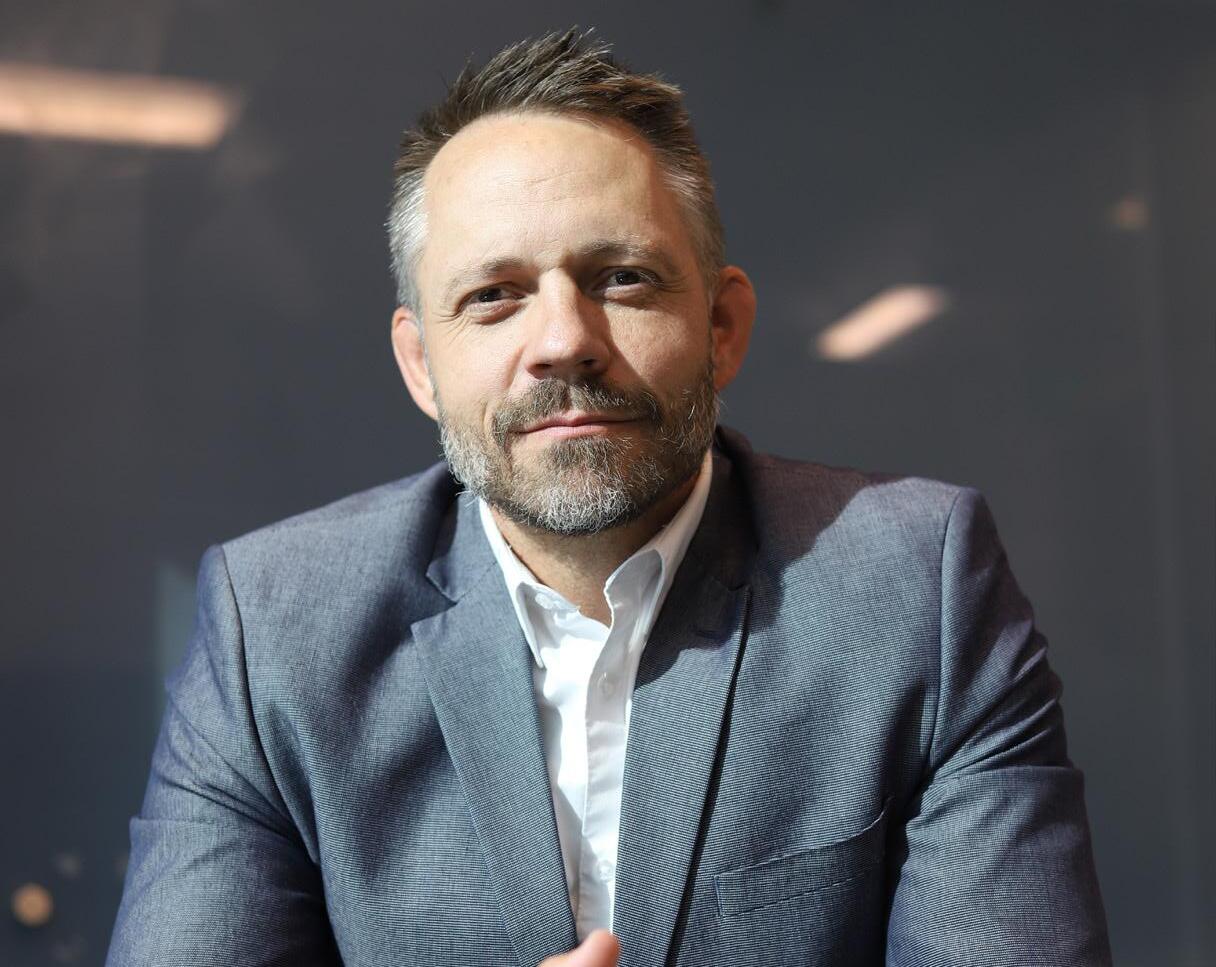
rely on technology to shape our culture,” he says. “Culture leads, not tech.”
Sorensen also rejects the common notion that well-being and performance are at odds. In his experience, most employee dissatisfaction doesn’t come from the work itself, but from how the work is managed. "People want to make a meaningful impact," he says, but it’s often poor leadership that creates frustration or a sense of being micromanaged. It’s not about the workload; it's about the environment. “No one comes home complaining about being productive and making a difference,” Sorensen adds. It’s usually the opposite—they feel stifled.
At JourneyTEAM, where the business landscape and technology are in constant flux, supporting employee growth is key. Sorensen has helped implement a learning and development strategy based on the 70-20-10 model, which emphasizes learning through experience. Seventy percent of learning comes from on-the-job experiences, 20% from coaching and mentoring, and 10% from formal education. “This model fits perfectly with our environment,” Sorensen notes, where employees face new challenges and opportunities every day.
He also recognizes that learning is not always smooth. "Growth involves errors, failures, and frustration," Sorensen says. But it’s these moments of discomfort that push the brain into neuroplasticity—allowing it to adapt and grow. Through real-world problem-solving, peer coaching, and ongoing collaboration, JourneyTEAM’s consultants continuously develop both personally and professionally. This holistic approach not only helps the team grow but also ensures they deliver the best outcomes for clients, driving the overall success of the company.
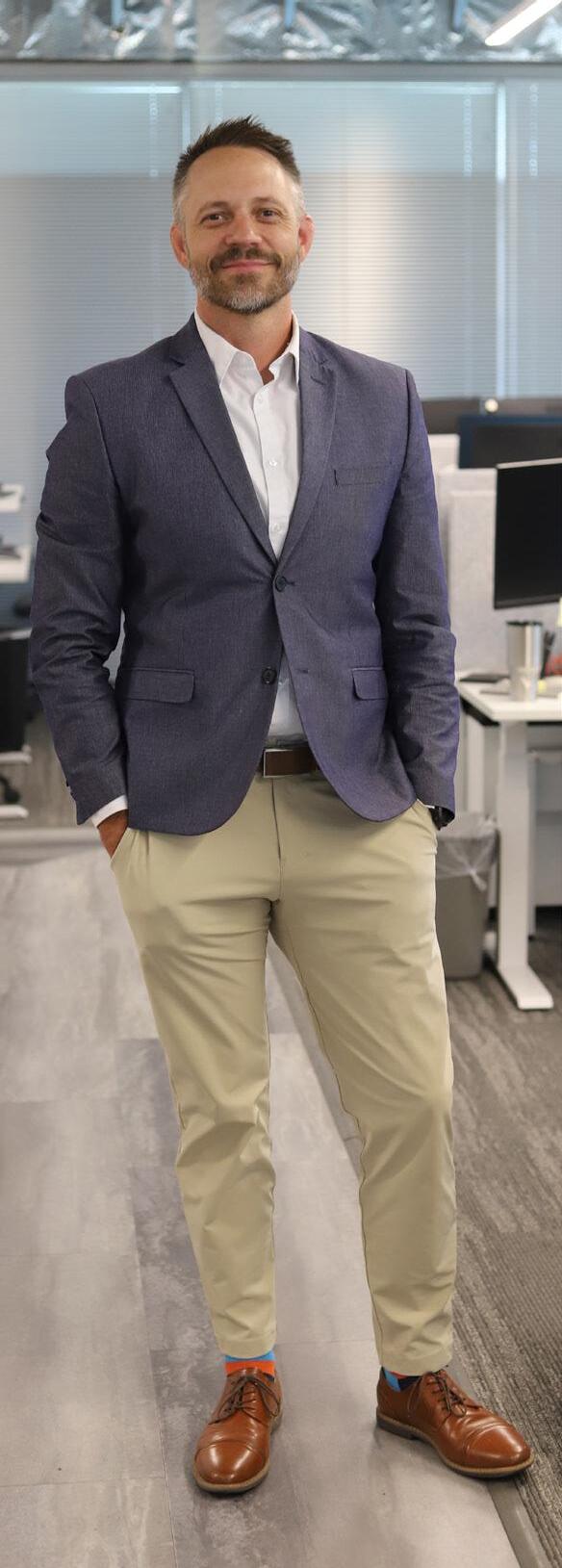
One of Sorensen’s biggest challenges as Chief People Officer at JourneyTEAM has been leading without formal authority. While he holds a prominent position within the C-Suite, not all leaders report directly to him. This creates a unique dynamic where his initiatives could easily be seen as "busy work" unless he’s intentional. The question Sorensen had to ask himself was, "How do you inspire action when you don't have direct authority?" The answer, he discovered, is that you don’t force it.
“True leadership is about inspiring people to reach their own conclusions on how best to serve their teams and the organization,” Sorensen explains. He believes that leadership based on influence, not authority, is far more effective. By focusing on empowering others and fostering a sense of ownership, he’s been able to guide leaders across the company
to create meaningful impact. It's a style of leadership built on trust, not control.
Over the years, JourneyTEAM has earned prestigious recognitions, including being named a Microsoft Partner of the Year and joining the Microsoft Inner Circle. Yet, Sorensen is quick to point out that these accolades are not his alone to claim. “I’d love to take credit for those achievements,” he admits, “but the truth is, it’s our consultants who deserve it. They’re the best at what they do.”
For Sorensen, his role is to ensure the right people are in the right roles and then give them the space and support to thrive. The recognition JourneyTEAM has received is a testament to the talent and dedication of its team, and as Sorensen proudly shares, "We were recently named Microsoft Global Partner of the Year for Dynamics Business Central." That success, he emphasizes, is a reflection of the team’s ability to consistently deliver excellence for their clients.
Over the years, JourneyTEAM has earned prestigious recognitions, including being named a Microsoft Partner of the Year and joining the Microsoft Inner Circle
By prioritizing autonomy and maintaining high standards during recruitment, Sorensen believes JourneyTEAM can cultivate a culture where employees feel empowered to innovate, excel, and drive success for both themselves and the company
Looking to the future, Kipp Sorensen’s primary goal for JourneyTEAM’s corporate culture is to continue eliminating distractions and unnecessary noise that often come from leadership. His vision is clear: focus on empowering people by stepping back and allowing them the space to fully share their expertise and creativity. "We need to focus on empowering our people," Sorensen emphasizes, "by stepping back and allowing them to fully share their expertise and creativity."
Another priority for Sorensen is refining JourneyTEAM’s recruitment strategy. He wants to ensure the company attracts individuals who are not only self-directed but also possess the winning mindsets necessary to thrive in a high-performing organization. “Luckily, I have one of the best recruiters on my team driving this initiative forward,” he adds, underscoring his confidence in the team. By prioritizing autonomy and maintaining high standards during recruitment, Sorensen believes JourneyTEAM can cultivate a culture where employees feel empowered to innovate, excel, and drive success for both themselves and the company.
When it comes to leadership in the tech industry, Sorensen believes the most critical skill over the next five years will be recognizing the true impact leaders have on their organizations. “How we show up as leaders is the single most important driver of our organizational culture,” he explains. There’s no room for complacency in leadership; leaders need to create environments where their teams can thrive. One of Sorensen’s current focuses is helping leaders move beyond tactical victories and focus on the strategic win of ensuring their people are succeeding. This approach not only drives scalable growth but also reinforces how JourneyTEAM serves its clients and supports its employees.
Ultimately, Sorensen believes leadership comes at a price. Leaders must be willing to pay that price by prioritizing others over themselves. “Despite all the strategies, knowledge, and shortcuts, effective leadership ultimately hinges on our courage and willingness to prioritize others,” he says. It’s this selfless commitment that Sorensen believes will position JourneyTEAM to excel as the tech landscape continues to evolve.





Utkarsh is a Learning Consultant, Executive Coach, Facilitator and Content Creator based in Melbourne, Australia. Over his 16-year career, from being a physiotherapist and that too a good one, to filming and editing 400 hours of content for a Columbia Business School professor, to scaling a startup and leading sales to now helping individuals and teams outperform themselves, he has learned to make fear his ally in living a courageous life. He has a passion for understanding human behaviour and using his diverse experience in building programs for organisations across the globe.

Utkarsh Narang Founder, IgnitedNeurons
Have you ever seen an infinity symbol?
I have always been fascinated by this symbol. It shows to me that anything is possible. The human intellect and wisdom know no bounds. It also represents our lives. On one side is the personal and the other side the professional, and at the centre is where we stand.
I love to extract parallels within my personal and professional lives.
When my younger son was growing up, during his first year on this planet, he would fall while learning to walk. He would get up and try again. He would fall again. One time, he hurt his
head. It was painful to see that happen. At that moment, did a part of me wanted him to stop learning this skill of walking? Absolutely not. We still wanted him to walk, so we allowed him to try again.
And one day, one fine day, he was walking!
This, in its simplest understanding, is the Growth Mindset. When we are growing up or are seeing our children grow up, we motivate them to learn new skills despite the challenges. Never do we tell them to give up on a skill or be so harsh as to criticise them into giving up.
As a seasoned executive with over two decades of experience navigating the everevolving business world, I've realised that the

In today's fastpaced global economy, where disruption is the new norm, embracing a growth mindset has become more critical than ever before
key to organisational success lies in our ability to learn. In today's fast-paced global economy, where disruption is the new norm, embracing a growth mindset has become more critical than ever before.
Early in my career, I was introduced to the concept of the growth mindset through the groundbreaking work of psychologist Professor Carol Dweck. Her research on the psychology of success struck a chord with me, as I recognised the fundamental difference between individuals with a fixed mindset and those with a growth mindset.
Individuals with a fixed mindset believe their abilities and intelligence are set in stone. In contrast, those with a growth mindset see them as malleable and capable of being developed through deliberate action, feedback, dedication and hard work. This simple yet profound distinction has significant implications for how we approach challenges, setbacks, and opportunities for growth.
Throughout my squiggly career (a story for another day!), I witnessed the power of a growth mindset in driving individual and organisational success. I am a trained physical therapist (with a Masters’ in Orthopedic Physical Therapy) but that is not a career I practice. I have self-learned my way through video production, operations, sales and now as a coach and learning consultant.
Google is a company that has consistently ranked among the most innovative and soughtafter employers in the world. Google's success can be attributed, in part, to its commitment to fostering a culture of continuous learning and
Studies have consistently shown that companies that embrace a growth mindset are better equipped to navigate challenging times and emerge stronger

experimentation. Employees are encouraged to take risks, learn from failures, and collaborate across teams to drive innovation. This growth mindset has enabled Google to stay ahead of the curve in an industry known for its rapid pace of change.
Studies have consistently shown that companies that embrace a growth mindset are better equipped to navigate challenging times and emerge stronger. One compelling study by Caniëls, Semeijn, and Renders (2018) found that a growth mindset enhances workplace engagement and employee productivity. This aligns with my own experience, where I've seen how a growth
mindset fosters a culture of continuous learning, collaboration, and innovation.
Another inspiring example is Amazon, a company that has revolutionised the retail industry through its relentless focus on customer obsession and innovation. Amazon's founder, Jeff Bezos, has been a vocal advocate of the growth mindset, emphasising the importance of embracing failure as a necessary step towards success.
"I believe you have to be willing to be misunderstood if you're going to innovate," Bezos once said. "If you've got a business model where you're only happy when you're right, you're not going to experiment enough."
While the benefits of a growth mindset are clear, promoting and maintaining such a mindset within an organisation can be challenging. As a leader, I've faced my fair share of obstacles in creating a culture that values learning, experimentation, and continuous improvement.
1. Overcoming Fear of Failure - It is one of the biggest challenges in promoting a growth mindset. In many organisations, failure is seen as a taboo, something to be avoided at all costs. However, as Bezos pointed out, embracing failure is a necessary part of the innovation process. Leaders must create an environment where employees feel safe to take risks and learn from their mistakes.
2. Consistent Application - Another challenge is ensuring that the growth mindset is consistently applied across all levels of the organisation. It's not enough for leaders to espouse the virtues of a growth mindset; they must also walk the talk
and model the behaviours they want to see in their teams.
3. Resistance to Change - In many organisations, the norm is considered sacrosanct and any change can lead to a reaction from the employees owning to a resistance to change.
Reflecting on my career and the lessons I've learned, I'm convinced that embracing a growth mindset is the key to unlocking the power of adaptability and innovation in the everchanging business landscape. By fostering a culture of continuous learning, experimentation, and collaboration, organisations can position themselves for long-term success and prosperity.
Beyond the challenges, the Return on Investment (ROI) of embracing a growth mindset is multifold. Here are five actions you can start to take today that will help you and your organisation embrace growth -
1. Schedule time to learn - The way you brush your teeth, find time to sleep, look at social media - you have to find time to learn. Learn for the joy that it brings.
2. Embrace feedback as a gift - The only way to learn, improve and grow is by receiving feedback. Encourage feedback for yourself and also for your teams within the organisation.
3. Celebrate the effort and your progressThere are times when learning will not lead to an immediate outcome. What is important is to celebrate the effort and the progress you have made.
4. Emphasise the process - When you set a process you follow, the chances of outcome increase. Make sure that you enjoy the process and stick to it.

5. Encourage innovation and experimentation - in your personal life and for your people and organisation, encourage the experimental mindset and people to innovate and take risks.
By fostering a culture of continuous learning, experimentation, and collaboration, organisations can position themselves for long-term success and prosperity
As you navigate the challenges and opportunities of today's business world, I encourage you to embrace a growth mindset. Believe in your ability to grow, learn, and adapt. Surround yourself with people who share your passion for learning and innovation. And never stop experimenting, taking risks, and pushing the boundaries of what's possible.
After all, as Dweck so eloquently put it, "the growth mindset is the compass that points you toward growth and prosperity." Let's embrace that compass and chart a course towards a future filled with endless possibilities.

Joseph Black is a co-founder at UniTaskr, a leading platform that connects students with freelance opportunities, providing practical experience and upskilling the future workforce. With a background in marketing and a passion for innovation, Joseph is dedicated to bridging the gap between education and industry, preparing individuals for the dynamic future of work.
In a recent interview with CXO Magazine, Joseph Black discussed his experience with the Future of Work and Education. He shared his views on the impact of education and the gap between education and the skills needed for the future, traditional workplace and classroom environments, and many more.


Joseph Black Co-Founder, UniTaskr
How do you envision the future of work and its impact on education?
In my opinion, the future of work is heading towards a more flexible and dynamic environment, which will significantly impact education. Traditional career paths are being replaced by project-based, freelance, and gig opportunities. This shift requires education to be more adaptable, focusing not only on foundational knowledge but also on practical skills and continuous learning. The integration of real-world experiences into curricula will
become essential, preparing students to navigate and succeed in this evolving landscape.
What role do you believe technology will play in shaping the future of work and education?
Technology will be a cornerstone in shaping both the future of work and education. It will facilitate remote work, virtual collaboration, and access to global opportunities, breaking down geographical barriers. In education, technology will enhance learning through online platforms,
The use of AI, VR, and big data will provide insights into student performance and learning styles, allowing for tailored educational approaches that maximize individual potential
interactive tools, and personalized learning experiences. The use of AI, VR, and big data will provide insights into student performance and learning styles, allowing for tailored educational approaches that maximize individual potential.
How can we ensure that education prepares individuals for the evolving demands of the future workforce?
In my opinion, education needs to adopt a more dynamic approach to prepare individuals for the evolving demands of the future workforce. This includes integrating practical experiences, such as internships and project-based learning, into curricula. There are platforms available that can complement traditional education by providing students with opportunities to apply theoretical knowledge in real-world settings, thereby bridging the gap between academia and industry.
What are the key skills and competencies that will be essential for success in the future of work?
The future of work will require individuals to possess a combination of technical and soft skills. Technical skills, such as data analysis, coding, and digital literacy, will be crucial due to increasing automation and technological advancements. Additionally, soft skills like communication, adaptability, and problemsolving will be essential for navigating a rapidly changing work environment.
How can organizations and educational institutions collaborate to bridge the gap between education and the skills needed for the future?
Organizations and educational institutions can collaborate by creating partnerships that
integrate real-world applications into academic programs. This can include internships, mentorship programs, and collaborative projects. By doing so, students gain practical experience and insights into industry demands. Additionally, companies can provide input on curriculum development to ensure that the skills being taught align with the needs of the workforce. This collaboration helps create a seamless transition from education to employment.
With remote work becoming more prevalent, what changes do you foresee in the traditional workplace and classroom environments?
Remote work has already led to significant changes in traditional workplace dynamics, including a shift towards virtual collaboration and flexible work arrangements. Similarly, in education, we can expect to see a greater emphasis on online learning platforms, asynchronous teaching methods, and virtual collaboration tools.
How can lifelong learning and continuous education support individuals in adapting to the changing landscape of work?
Lifelong learning and continuous education are crucial for individuals to stay relevant in a rapidly changing work environment. As industries evolve and new technologies emerge, the skills required for success will also change. Continuous learning ensures that individuals can update their skills, learn new tools, and adapt to shifting demands. Encouraging a culture of lifelong learning within organizations and providing access to resources for professional development will help individuals remain competitive and capable.
Lifelong learning and continuous education are crucial for individuals to stay relevant in a rapidly changing work environment
What strategies can organizations implement to foster a culture of innovation and adaptability in the workplace?
Organizations can foster a culture of innovation and adaptability by promoting experimentation, embracing diversity of thought, and encouraging continuous learning. Creating cross-functional teams, providing resources for professional development, and recognizing and rewarding innovative ideas can also contribute to cultivating an innovative workplace culture.
In what ways can educational institutions leverage emerging technologies and pedagogical approaches to enhance learning experiences?
Educational institutions can leverage emerging technologies such as virtual reality, artificial intelligence, and gamification to enhance learning
experiences. By incorporating interactive and immersive learning environments, institutions can cater to diverse learning styles and provide more engaging educational experiences.
How can we address the potential challenges and inequalities that may arise in the future of work and education?
Addressing potential challenges and inequalities in the future of work and education requires a multifaceted approach. Ensuring access to quality education and training for all individuals, regardless of socioeconomic background, is crucial. Policies and initiatives that promote digital inclusion, provide financial support, and create opportunities for underrepresented groups can help bridge the gap. Additionally, fostering partnerships between the public and private sectors can create more inclusive and equitable opportunities for all.






